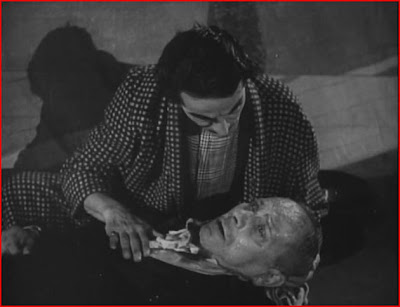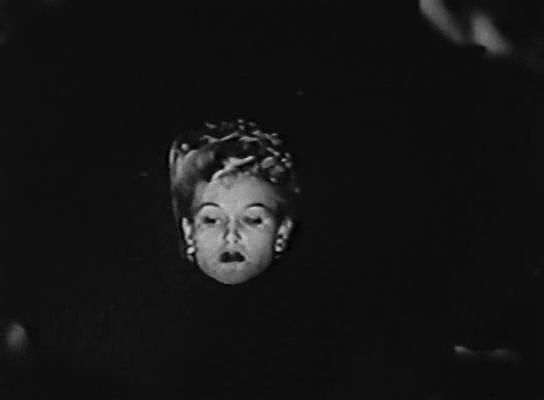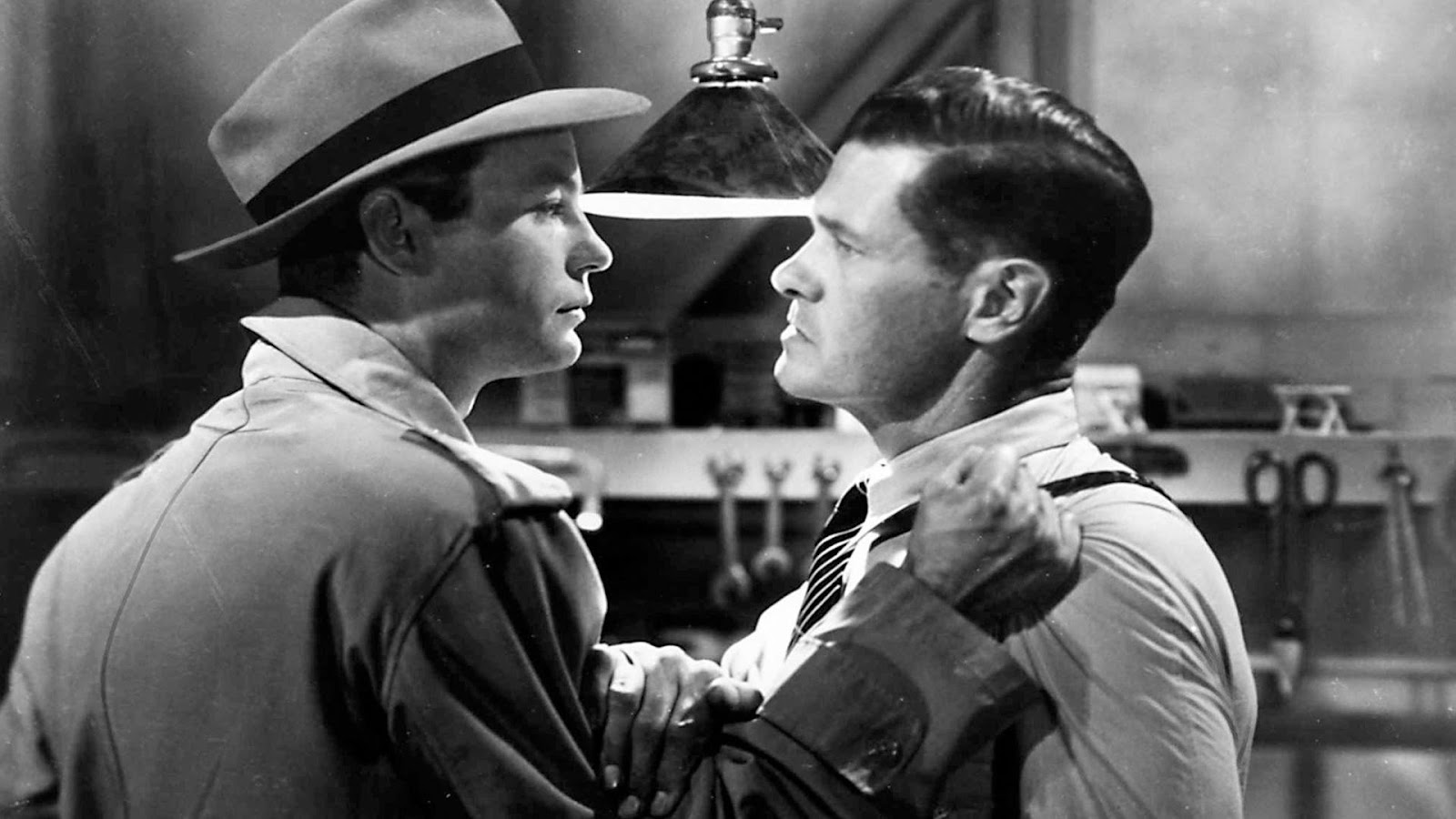James Naremore claims that it "has always been easier to recognize a film noir than to define the term." Naremore further states, "There is, in fact, no completely satisfactory way to organize the category; despite scores of books and essays that have been written about it, nobody is sure whether the films in question constitute a period, a genre, a cycle, a style, or simply a phenomenon." People's typical perception of film noir contains the following. The main characters are either anti-heroes wronged by the law or are working outside the law. To narrow down the main characters further, they would usually qualify as a hard-boiled, fedora -and trench coat-wearing detectives or wrongfully convicted men who wander into trouble at the wrong place, at the wrong time. The female characters are femme fatales, women who are cold, seductive, and selfish. In short, they are beautifully shallow monsters. The antagonists in film noirs are either corrupt officials or murderous criminals with little to no charm. Film noirs were ideally shot in black and white with heavy low-key lighting to create an ominous shadowy atmosphere, usually on empty foggy city streets, and in shabby apartments, smoky bars and diners. The question is, is it true that there are films that are considered noir that challenge people's ideas of the style?
Looking into the more obscure side of the style, two films that fit the category yet challenge the general perception of it are The Great Flamarion (1945) and Fear in the Night (1947). The best way to start when analyzing the two films is the beginning. It is not uncommon for a film noir to tell a chronologic story, yet it is seen as a staple of the style for the film to present itself through flashbacks. Typically, what leads to this narrative is an opening designed to get audiences immediately hooked with an action, leaving them with questions of how the protagonist made it to where he is now. The Great Flamarion uses this traditional approach. The film opens in Mexico inside a theatre as the camera slowly approaches the stage, catching an end of a performance and the beginning of another. The camera halts at a medium shot of a clown performing, only to have the performance interrupted by a gunshot heard off-screen. During the chaos, glimpses of the suspected crook are revealed as he climbs the ladder in an overhead shot. His face appears as he is walking on the scaffold above the stage, looking wounded as he hides from the authorities. Shortly after the chaos, we discover a woman was murdered, and her husband is falsely arrested for the crime. While finding out this info, part of it is seen through the P.O.V. of the man hiding up in the scaffolding viewing the conversation from above. With everybody gone, except for the clown, the man hiding falls onto the stage, where he is then comforted by the actor. The clown recognizes him as the film's title character, The Great Flamarion. Flamarion reveals he was the one who murdered the actress and that she shot him in self-defense. With no hope for survival from his wounds, Flamarion confesses the reason for the murder before dying, leading to a flashback officially beginning the film's story. With film noirs, a murder usually happens on the dark city streets. While the murder does take place inside the theater, the painted backdrop behind him resembles a city street.
Despite the unconventional setting, everything in The Great Flamarion's opening scene plays out as a typical film-noir. Fear in the Night's opening is utterly different. The film itself does not look like a film noir, more so a low-budget combination of a Hitchcockian thriller with cheesy spooky visuals that William Castle would be proud to exhibit in his gimmicky horror films. The background for the opening credits has blurry kaleidoscope imagery as loud dramatic music plays with a title as dramatic as if we were watching a teaser trailer for a low-budget old horror film or the midnight spook shows (before they were even a thing). The first image that does appear looks just as spooky and hokey, with a woman's head floating toward the screen over melancholy narration that sounds strangely distant. What follows is a murder scene played out as intense with the same surreal kaleidoscope-like imagery as the title sequence, this time adding blurry ripples, mirrors, dramatic close-up shots, heavy low-key lighting, and an overhead shot of the character spinning into a vortex. Vivian Sobchack mentions "that back projection is to film-noir space what flashbacks are to film-noir time. Not merely a tacky effect of a low-budget production, back projection is an aesthetic element that well serves noir's philosophical worldview, transforming it not only into something literal and materially realized but also producing a subtle yet significant effect on the viewer's sensual comprehension of cinematic meaning." The same can be said about the low budget aesthetics of the sequence. It looks fake yet creates an image straight out of a nightmare. While the sequence looks other worldly, the inner monologuing and the imagery of a man murdering a woman ground this surreal sequence making it appear we are gazing into someone's haunting memory.
The scene dissolves into an image of the protagonist Vince Grayson (played by a young DeForest Kelley) waking up in bed, believing it was all a dream hence the unusual imagery. Surprisingly, the character wakes up to find two thumbprints on his neck, a key, and a button from the nightmare. As in The Great Flamarion, there is a hook involving murder and a mystery that escalated quickly. Still, there are no flashbacks in the narrative, nor are the actual events supposedly happening. At least, that is not what the film wants audiences to think at first. The film is almost like an episode from The Twilight Zone, with a mystery that appears set in a supernatural realm. We, the audience, are wondering like the protagonist if what he envisioned was a dream or not. And if not, then how and why? It is not until the climax that it is made clear that everything that was shown in the film's opening did indeed happen. What audiences are witnessing is a flashback only shown from the delusions Vince was under, further creating a literal nightmare that is subtle with the meaning of what the viewer is seeing. In short, the film opens with a flashback without stating that it is one until the end.
A popular trope in film noir that the two films do not have is a protagonist who is a tough detective working outside the law. What the two films do share, however, is a doomed protagonist. Fear in the Night, despite its horror-thriller-like concept, does involve a character in trouble with the law all throughout. However, Vince does not have trouble with the law directly. He did not cause an accidental death that he knows he is responsible for, like Al Roberts in Detour. Vince is unsure if what he dreamed was real or not, based on the places, people, and things he sees relating to the dream he has never encountered until that moment. And he does not keep his suspected crime a secret from the authorities either. On the contrary, he has a brother-in-law in the police force to whom he confesses his crimes, who of course, shrugs it off as nothing more than a nightmare. It is not often that a protagonist in film noir confesses to a crime they did not commit.
Flamarion, character-wise, is the opposite of Vince. While Vince functions as the everyday social individual with a steady job, Flamarion is a successful antisocial showman with no likable qualities due to his arrogant and cold personality. The only thing he is devoted to is his work as a vaudeville marksman, spending many lonely hours in the dark perfecting his craft. He is so unlikable that without his mournful introduction any audience member could take him as a villain for his menacing appearance, brutish attitude, and a profession that can easily get him a job as a hitman. In fact, he does become a hitman at one point in the film by killing one of his stage actors during his act to make it seem like an accident. Usually, a protagonist committing murder would feel the guilt of some sort after or paranoia about the law finding out. But he does not show any of the two. He legally gets away with murder by convincing people it was an accident, and he thinks nothing of killing a man, not because he intended to be a cold-blooded murderer, it is because he was corrupted by something more dangerous than a gangster or thug: a femme fatale.
The woman corrupting Flamarion is his beautiful assistant, Connie (Mary Beth Hughes), who works with her alcoholic husband, Al (Dan Duryea), during the act. Connie is a maneater- a woman who never settles down with one man. She will marry a man or date him for a while until she gets bored and goes for the next man, she finds attractive. Just abandoning a man for another is not always easy for her, especially in the bonds of holy matrimony; that's where Flamarion comes to play in her little plan. She has no love or physical attraction for him, nor is he the person she seeks to gold-dig from. Connie uses Flamarion so she can wed a bicyclist in the show Eddie (Stephen Barclay). As the femme fatales in noirs like to use and manipulate men to achieve selfish desires, Connie seduces Flamarion with more than just sex appeal. She plays into Flamarion's sentimental weaknesses by looking through his items to find out about his ex-wife, who has broken him. Mentioning her angers Flamarion, but Connie creates a false, helplessly innocent personality to give Flamarion hope for new true love and, in return, help her leave her abusive husband. By penetrating Flamarion's past and using a facade, he has contacted his sensitive side that he has hidden for so long and is on his knees to do anything she says. And like almost any seductive femme fatale, if it is not stealing or blackmail, it is murder she manipulates him to do. People like to remember criminals such as Vince Stone in The Big Heat, the Stranger in Stranger on the Third Floor, or Harry Lime in The Third Man as the typical main baddies in film noir. However, femme fatales often at times serve as the main villain as well. Notable examples include Vera in Detour, Kitty in Scarlet Street, and Ellen in (the debated color noir) Leave her to Heaven.
Fear in the Night reverses the typical film noir tropes in The Great Flamarion. The film has no femme fatale, or at the very least, one that does not meet any of the conventions. The female characters in the movie exist more as moral support or a victim than seductive villainesses or innocent heroines that attempt to take control of the situation (like Jane in Stranger on the Third Floor or Debby in The Big Heat). They are the Susan Vargas from Touch of Evil and Katie Bannion from The Big Heat of their time. The antagonist is not the typical criminal people would generally think of when contemplating film noir. The criminal, Mr. Belknap, is a hypnotist who rarely gets his hands dirty-not too different from the crime bosses or manipulative femme fatales who use their power or charms in order to persuade people to do their dirty work. In The Great Flamarion, the first time Flamarion starts developing some feelings for Connie is as he is doing routine target practice for his act. As Connie starts sweet-talking him, the reflective light from the pendulums Flamarion shoots move back and forth on the wall as the sound of ticking is played on the soundtrack. The image symbolizes Flamarion becoming hypnotized by Connie's beauty and claims about him. Fear in the Night uses hypnotism in a literal sense. No desires attract Vince, he is instead forced to do Belknap's bidding without free will.
Paul Schrader states "Film noir is not a genre, as Raymond Durgnat has helpfully pointed out over the objections of Higham and Greenberg’s Hollywood in the Forties. It is not defined, as are the western and gangster genres, by conventions of setting and conflict but rather by the more subtle qualities of tone and mood." Both films partially follow the conventions of the film noir style. Both films have a startling and puzzling beginning, but each has a different narrative. Flamarion and Vince are doomed protagonists, except one commit murder to achieve a desire while the other is in an uncontrollable trance, willing to admit a crime. And both films either do not share a femme fatale character or a vicious criminal. As different as the two films are in so many ways, the film noir style can still be felt and seen, not just in character and story, but also in terms of atmosphere. The grim abstract imagery visually presents the viewers with a constant sense of danger. A slow pace to build up a sense of urgency. Music that can be mournful, intense, or deceptive to emphasize the environment and characters. The clothing style subtly emphasizes the characters' personalities as the backgrounds do. These technical elements, familiar dramatic character tropes, and a suspenseful story relating to crime create film noir. It is difficult to pinpoint what film qualifies as film noir or not (noir infuses other genres, including westerns, heist films, and melodrama), as it has been debated for an extended period. However, there is something that can be felt within its tone and visuals that cannot be felt or found in classic crime films like The Public Enemy, Little Caesar, and The Petrified Forest. If there is one thing for sure about the appeal of film noir it is the ominous transgressive escapism. As Corey K. Creekmur nicely put it. "Loving film noir is thus somewhat analogous to the doomed hero of a classic film noir such as Out of the Past (Jacques Tourneur, 1947) directing his passion to the dangerous but exciting femme fatale and away from the safe but dull nice girl: our attraction and our reason, or our passion and our morality, are pulled in opposite directions. Whether we identify with the flawed hero or the femme fatale (there’s little desire to identify with the good girl), we want to be bad. The love of film noir is similarly transgressive, if only in fantasy."








No comments:
Post a Comment